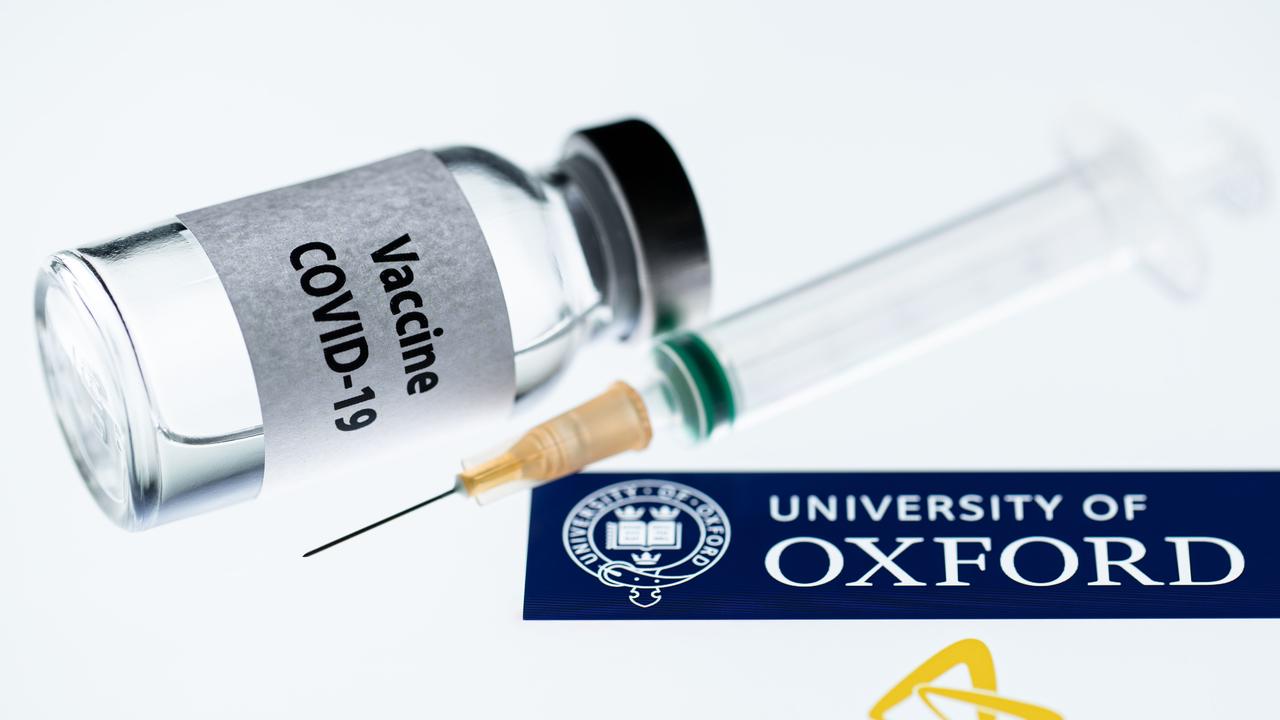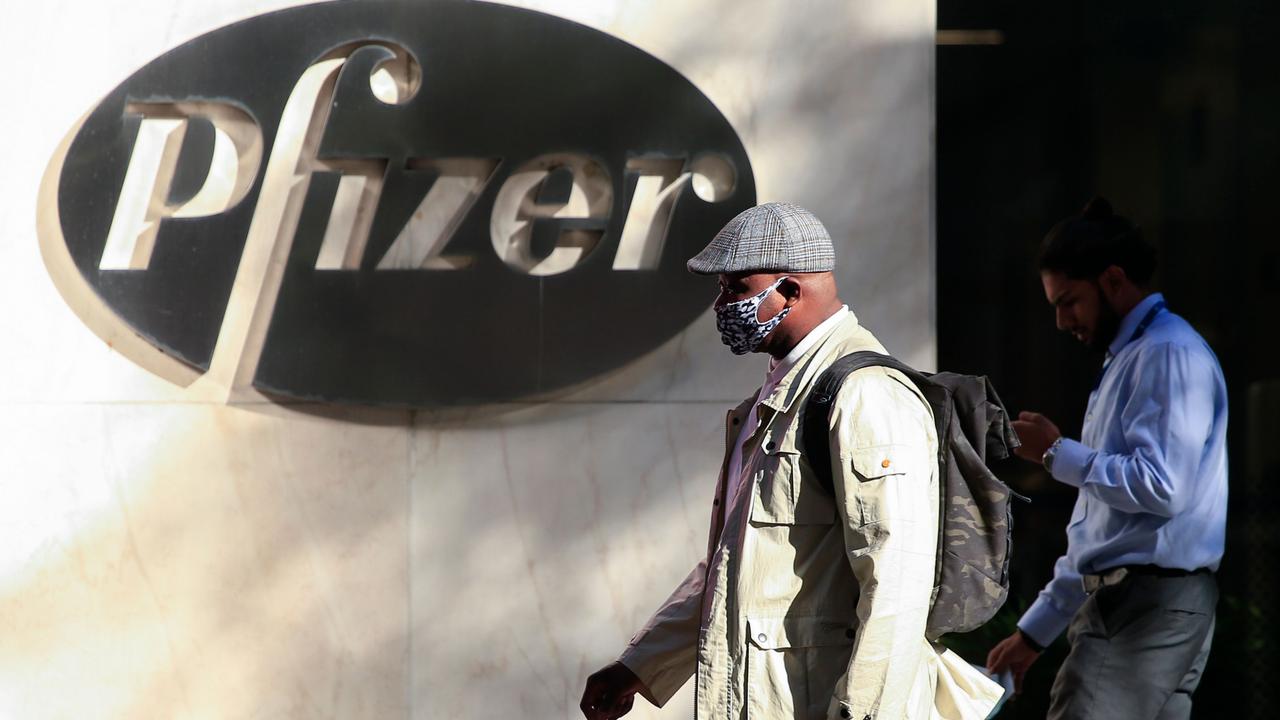Feature of AstraZeneca-Oxford vaccine ‘puzzling’ scientists
Scientists worldwide are “scratching their heads” about one particular effect of a much-hyped COVID-19 vaccine that just doesn't make sense.
Early trials of one of the key vaccines that could bring the coronavirus pandemic under control have proved promising, but an aspect of the results is “puzzling” experts.
The vaccine produced by British-Swedish pharmaceutical firm AstraZeneca and Oxford University, 30 million doses of which will be produced in Australia, appears to be more effective the less of it is administered to recipients.
It is one of the three leading COVID-19 vaccines under development alongside others by Moderna of the US and a joint US-German vaccine from Pfizer/BioNTech
On Monday, AstraZeneca and Oxford University announced its vaccine had an average efficacy of 70 per cent.
That is lower than those by Pfizer/BioNTech and Moderna which have come in above 90 per cent.
The Oxford vaccine was only 62 per cent effective if administered in two equal doses. However, its efficacy grew if those on the trial were given an initial half dose followed by a full dose.
UK science journal Nature said that the vaccine should offer more protection if it was given in a lower quantity was both “puzzling scientists” and “head scratching”.
Multiple theories have now sprung up as to why this might be.
RELATED: Oxford, AstraZeneca vaccine is 70 per cent effective, trials show

One theory is that simply more testing needs to be done. The early results are based on so-called phase III trials, the most in-depth in a vaccine’s approval process, in the UK and Brazil which saw 11,000 people either given the Oxford vaccine or a placebo.
A smaller number than this was given a half dose followed by a full dose, rather than two full doses.
Data from the US, Japan, South Africa and Russia, where trials are still in place, is yet to be assessed and that may change the overall result.
Some researchers are pessimistic and have forecast that when the full results are in the half dose, full dose regimen could be just 66 per cent effective, below its rivals.
However, other immunologists have speculated that the lower initial dose may be more effective at encouraging the body to develop immune cells that then get a boost by a bigger second dose.
Professor Andrew Pollard, director of the Oxford Vaccine Group, said it was an “intriguing” finding.
He said there was “more work to be done” and it could well be that an initial dose is “priming the immune system” to respond.
Other experts have said this is a potential explanation.
“It is possible that AstraZeneca threaded the needle with their dosing,” virologist at the University of Pennsylvania in Philadelphia James Wilson told Nature.
Even if the AstraZeneca-Oxford vaccine proves to be less effective than those by Pfizer or Moderna it has a number of other aces up its sleeves.
Firstly, an effectiveness of 70 per cent is still considered to be good considering the annual flu vaccine is generally only 40 – 60 per cent effective.
RELATED: Moderna and Pfizer’s vaccines explained
RELATED: How virus could fight back against vaccine

The Oxford dose may also provide a level of protection from people transmitting COVID-19, something that has yet to be ascertained in the rival vaccines.
It also is thought to travel better and can be stored is standard fridges unlike the Pfizer vaccine which needs to be kept at -70C.
Additionally, the Oxford vaccine already has a production line ready to start cranking up with AstraZeneca estimating it could have 200 million doses ready in just weeks.
In Australia, local biotechnology company CSL is on hand to begin pumping out the vaccine.
“These findings show that we have an effective vaccine that will save many lives,” Oxford’s Prof Pollard said, adding that if half doses are given it could increase the number of people able to be vaccinated.
AstraZeneca chief executive Pascal Soriot said the studies show the vaccine will be “highly effective against COVID-19 and will have an immediate impact on this public health emergency.”
DIFFERENCE BETWEEN RIVAL VACCINES
There are some key differences between the UK’s Oxford version and the US-based Moderna and Pfizer versions.
The Oxford vaccine, called ChAdOx1 nCoV-19, is made from a weakened version of a common cold virus (adenovirus), that has been genetically changed so that it cannot grow in humans.
Adenovirus vaccines have been researched and used extensively for decades, with the benefit that they are stable, easily made and can be stored at the same temperature as a domestic fridge.
This means they could be easily distributed and deployed using the existing supply chain based on using GP surgeries and pharmacies. It also means it could be easier to administer in hotter climates or developing countries where such facilities for cold storage do not exist.
The Moderna and Pfizer versions by contrast, rely on mRNA technology and are created in a lab using chemicals, enzymes, bacteria or live cells.
Scientists essentially make a synthetic version of the virus’s messenger ribonucleic acid (mRNA). This then prompts the body to make a particular protein, which is detected by the immune system and this causes the immune system to make antibodies to fight against it.




